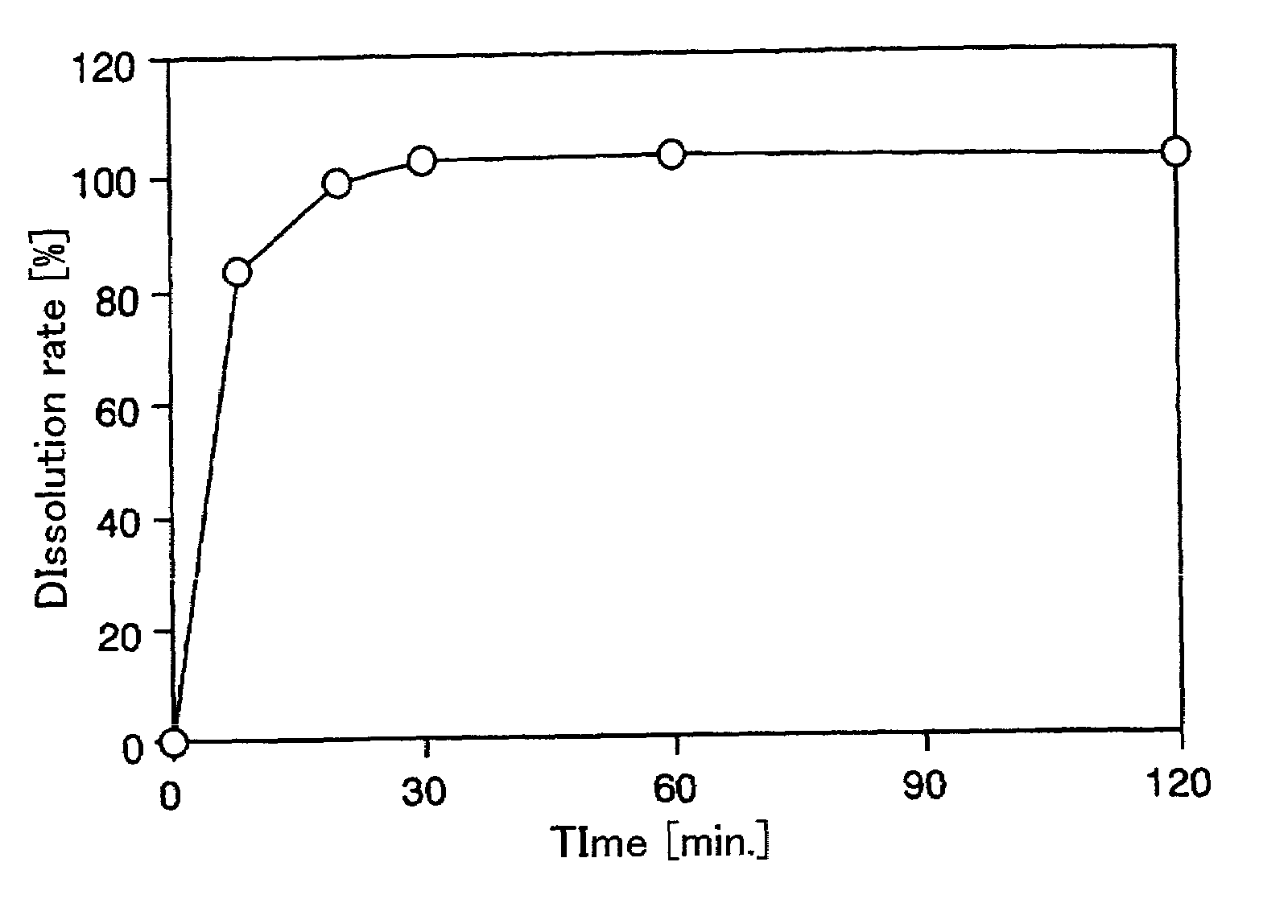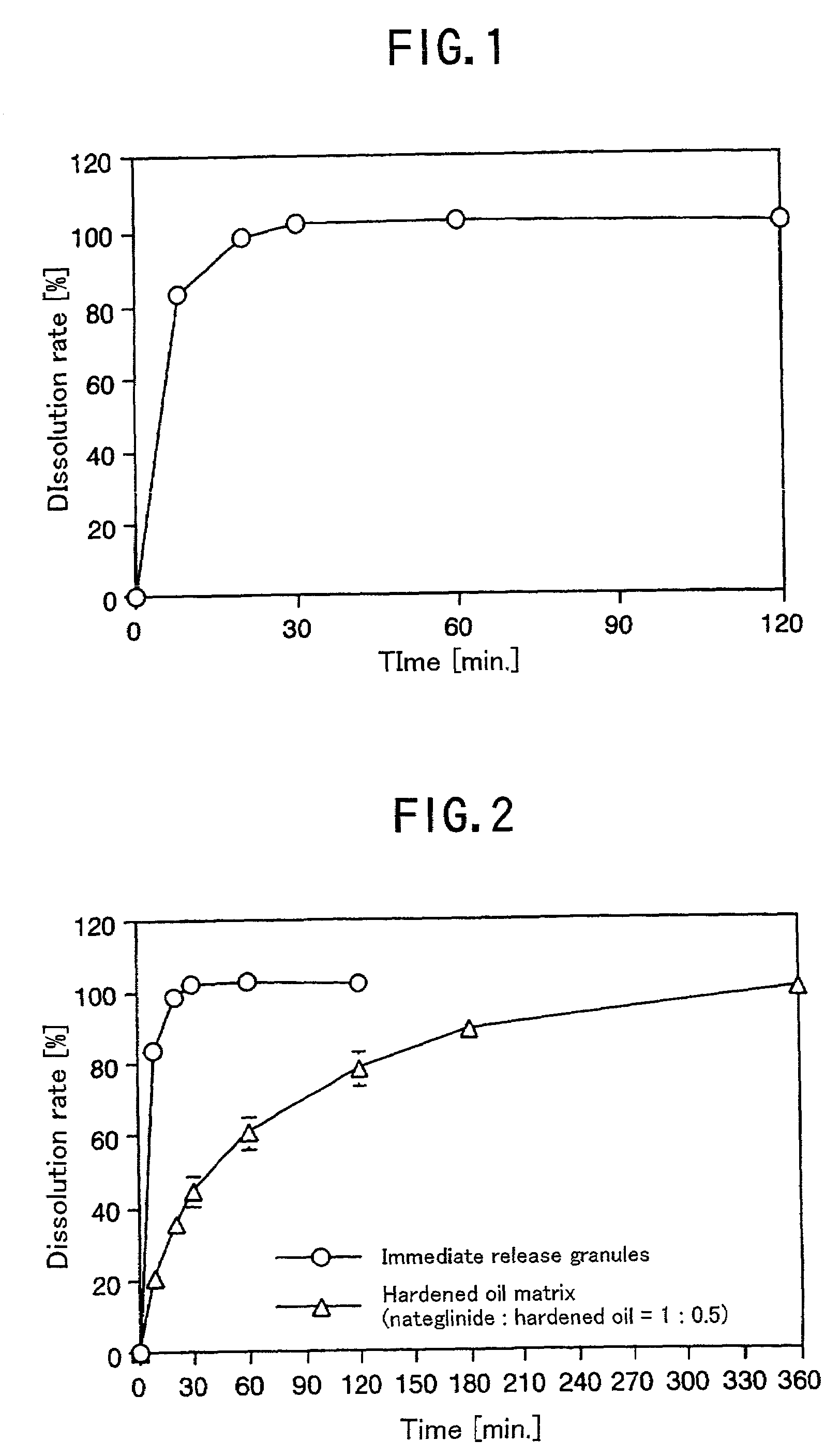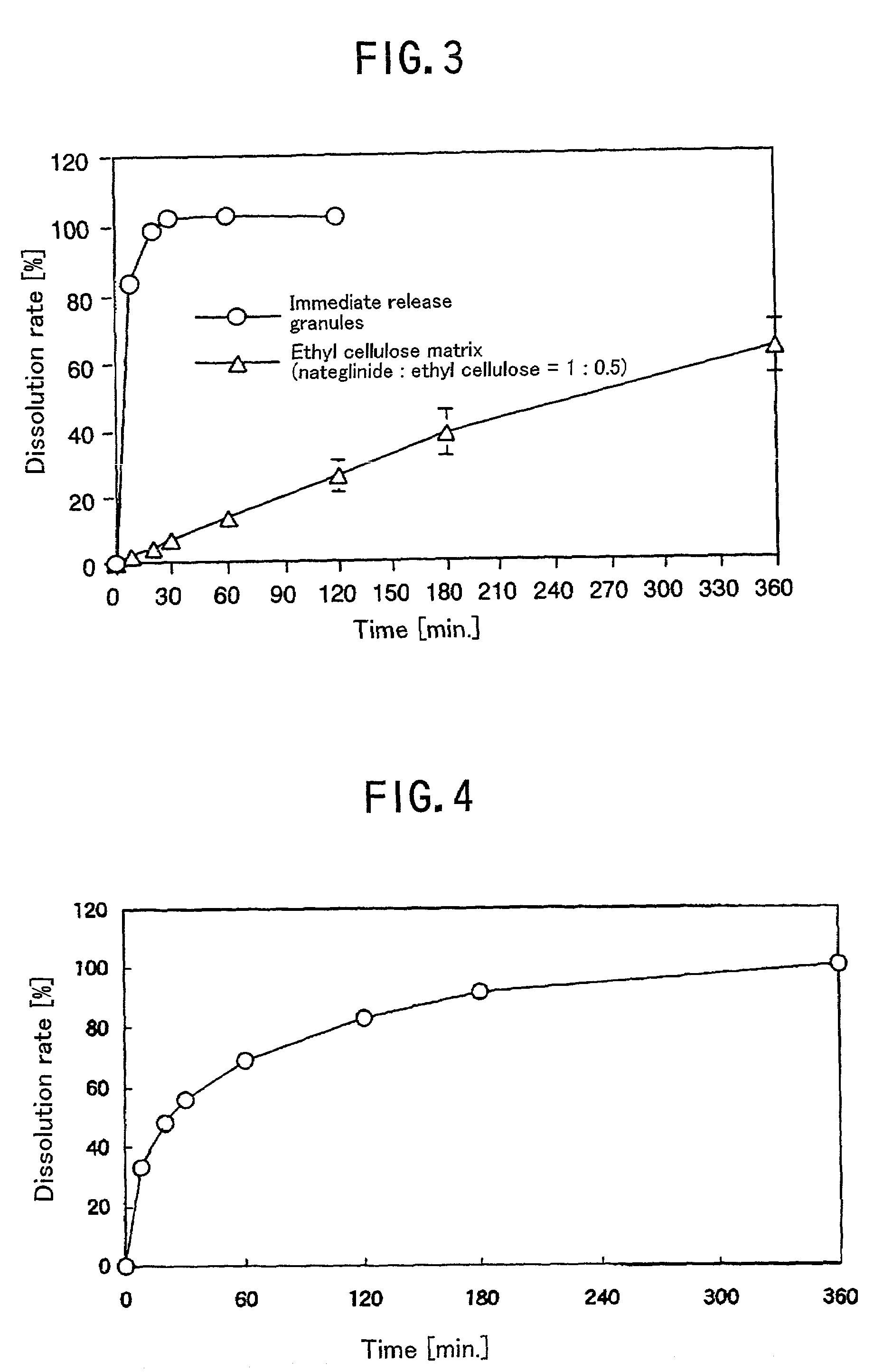Antidiabetic preparation for oral administration
a technology of antidiabetic and oral administration, applied in the field of antidiabetic, can solve the problem of no preparation for reducing both levels
- Summary
- Abstract
- Description
- Claims
- Application Information
AI Technical Summary
Benefits of technology
Problems solved by technology
Method used
Image
Examples
example 1
Immediate Release Granules
[0082]Nateglinide (375.0 g), 637.5 g of lactose monohydrate and 450.0 g of hydroxypropyl cellulose having a low degree of substitution were mixed with a high-speed agitation granulator for 10 minutes. Subsequently, 1,035 g of a binding solution of 15 g of hydroxypropyl cellulose in water was added, and granulation was conducted for 2.5 minutes. The total amount of the resulting granular product was uniformly granulated with a new speed mill, and dried with a fluidized bed drier. The obtained granules were screened through a sieve of 850 μm. The granular product remaining on the sieve of 850 μm was forcibly passed through the sieve, and both products were mixed to form immediate release granules.
[0083]The dissolution profile in the second solution of the Japanese Pharmacopeia disintegration test method was evaluated by a JP puddle method (test solution 900 ml: 50 rpm) Consequently, it was identified that almost 100% nateglinide was released in 20 minutes (FI...
example 2
Matrix Granules Using Hardened Oil (Controlled Release)
[0085]Hardened oil (1.5 g) was melted in a mortar by heating, 3 g of nateglinide was added thereto, and these were thoroughly kneaded. After the temperature was returned to room temperature, the kneaded product was granulated, and was screened to obtain matrix granules of 180 to 710 μm.
[0086]The dissolution of the resulting matrix granules in the JP 2 solution was evaluated by the JP 13 puddle method (test solution 900 ml: 50 rpm). The formation of the matrix made the dissolution rate of nateglinide slower than that of immediate release granules (FIG. 2). The controlled release considered mainly effective for decreasing a fasting blood glucose level to make it close to a normal level was enabled.
example 3
Matrix Granules Using Ethyl Cellulose (Controlled Release)
[0087]Ethyl cellulose (1.5 g) and 3.0 g of nateglinide were dissolved in ethanol, and ethanol was distilled off using an evaporator. The resulting solid matter was further vacuum-dried at 60° C. for 3 hours or more. The thus-obtained solid matter was granulated, was screened to obtain matrix granules of 180 to 710 μm.
[0088]The dissolution of the resulting matrix granules in the JP 2 solution was evaluated by the JP 13 puddle method (test solution 900 ml: 50 rpm). The formation of the matrix made the dissolution rate of nateglinide slower than that of immediate release granules (FIG. 3). The controlled release considered mainly effective for decreasing a fasting blood glucose level to make it close to a normal level was enabled. Example 4 Dissolution profile when mixing immediate release granules with controlled release hardened oil matrix granules
[0089]The dissolution profile in the JP2 solution when mixing the immediate rele...
PUM
| Property | Measurement | Unit |
|---|---|---|
| pH | aaaaa | aaaaa |
| pH | aaaaa | aaaaa |
| pH | aaaaa | aaaaa |
Abstract
Description
Claims
Application Information
 Login to View More
Login to View More - R&D
- Intellectual Property
- Life Sciences
- Materials
- Tech Scout
- Unparalleled Data Quality
- Higher Quality Content
- 60% Fewer Hallucinations
Browse by: Latest US Patents, China's latest patents, Technical Efficacy Thesaurus, Application Domain, Technology Topic, Popular Technical Reports.
© 2025 PatSnap. All rights reserved.Legal|Privacy policy|Modern Slavery Act Transparency Statement|Sitemap|About US| Contact US: help@patsnap.com



